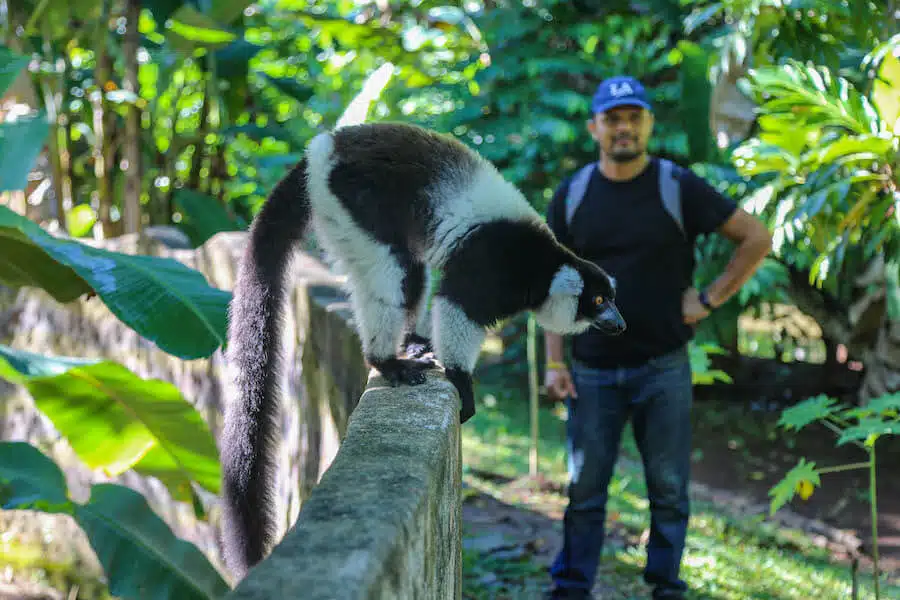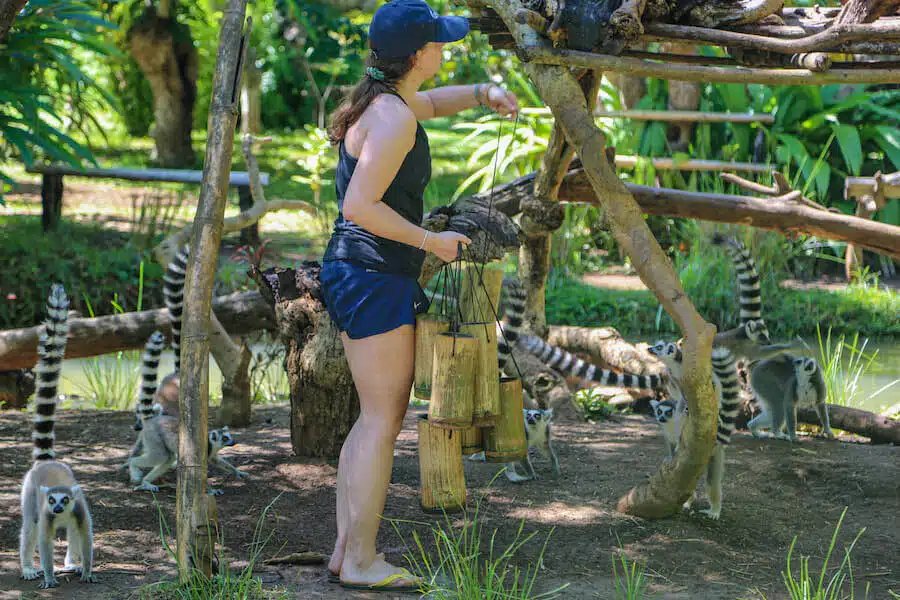Amidst the breathtaking landscapes of Madagascar, a dance of destiny unfolds – a tale of resilience, survival, and hope. At the heart of this story lie the captivating creatures known as lemurs, a unique group of primates found only in this lush island paradise.

With over a hundred species identified, lemurs have evolved to fit various niches in Madagascar’s diverse ecosystems. Their playful nature and soulful eyes have enchanted generations of travelers, making them an essential part of Madagascar’s cultural and ecological heritage.
What are the Lemurs?
Lemurs are a group of primates that belong to the biological superfamily Lemuroidea. They are native to the island of Madagascar, located off the eastern coast of Africa. Lemurs are considered one of the most primitive groups of primates, and their evolutionary history on Madagascar dates back tens of millions of years. Due to their isolation on the island, they have developed into a diverse and unique group of animals with various species, sizes, and behaviors.
Some key characteristics of lemurs include their relatively small size, with some species being as small as a mouse and others as large as a cat. They have a specialized toothcomb, which is a set of forward-projecting teeth in the lower jaw that they use for grooming and feeding. Lemurs also possess a reflective layer in their eyes called the tapetum lucidum, which enhances their night vision.
These primates are primarily arboreal, which means they spend most of their time in trees. They are agile climbers, leaping from branch to branch with ease. Lemurs have long, bushy tails that help them maintain balance while moving through the trees.
One of the most striking features of lemurs is their diverse range of behaviors and appearances. From the acrobatic and playful ring-tailed lemurs to the slow-moving and nocturnal mouse lemurs, each species has unique adaptations that allow them to survive in the various habitats found across Madagascar.
As charismatic and captivating creatures, lemurs play a significant role in Madagascar’s ecosystem. They act as pollinators and seed dispersers, helping to maintain the delicate balance of the island’s flora. Unfortunately, many lemur species are currently threatened with extinction due to habitat destruction, hunting, and other human-induced factors. Efforts are underway by conservationists and local communities to protect these extraordinary primates and preserve their natural habitats for generations to come.
Lemur Conservation in Madagascar
Yet, lurking in the shadows, a dark cloud casts its shadow upon these enchanting creatures. Rapid deforestation, driven by human activities, poses an imminent threat to their habitats. As the forests shrink, so do the chances of survival for these graceful beings.
Lemurs, like skilled dancers, are masters of adaptation. Their diverse diet ranges from fruits to insects, demonstrating the resilience needed to survive in ever-changing environments. However, even the most skilled dancers can falter without a stable stage, and the destruction of their natural habitats pushes them toward the brink of extinction.

Conservationists, the unsung heroes of this tale, have stepped onto the stage to champion the cause of lemur preservation. Working tirelessly against the tides of deforestation and climate change, they strive to protect the lemurs and their habitats.
Local communities, too, have embraced their roles as stewards of the land. Realizing the interconnectedness between their well-being and that of the lemurs, they have begun to coexist in harmony, nurturing the delicate balance between man and nature.
But the dance is far from over. Every step towards conservation is a testament to the indomitable spirit that runs through the veins of those committed to saving Madagascar’s precious lemurs.
Education emerges as a powerful partner in this waltz of survival. Raising awareness about lemurs’ importance as seed dispersers, pollinators, and indicators of ecosystem health can inspire change within society. Each individual inspired to take action becomes a chorus in this grand symphony of conservation.
International partnerships, too, provide crucial support to the cause. Through collaboration and shared knowledge, we can create a harmonious future for lemurs, where borders hold no sway over their survival.
By protecting lemurs, we safeguard not only their existence but also the intricate tapestry of biodiversity that graces Madagascar. As one thread of this tapestry unravels, the entire fabric becomes susceptible to destruction.
So let us join hands and hearts, weaving a legacy of compassion and conservation. The dance of destiny awaits its next steps, and the choice is ours to determine whether these magical creatures continue to grace Madagascar’s forests or fade into the mists of time.
In the face of adversity, let us unite as one global community, dancing towards a future where lemurs roam freely, and Madagascar’s natural symphony thrives once more. The stage is set; the time to act is now.
Volunteer with Lemurs in Madagascar with Abroad Escape, click here for more info.




